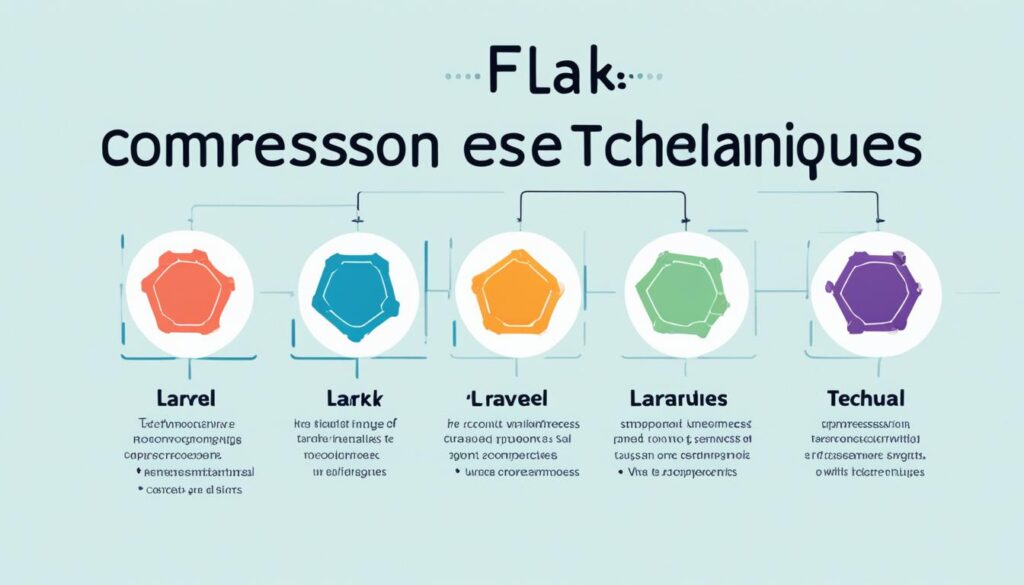Flask vs Laravel Compression: Key Differences
Friday, 6/7/2024, 7 minutes to read

Choosing the right web development framework means looking at features and how well they perform. When it comes to compressing responses, Laravel and Flask have different approaches. Laravel is great for big projects, offering many features and an admin interface. On the other hand, Flask is a better option for smaller projects. It focuses on simplicity and is very flexible, which is good for quick builds.
Key Takeaways
- Laravel is feature-rich, ideal for large projects, whereas Flask excels in smaller-scale, rapid development scenarios.
- Both frameworks have their unique advantages for response compression: Flask relies on developer-implemented extensions, Laravel has built-in tools.
- The choice between Flask and Laravel for compression hinges on project needs – simplicity and speed or extensive features and scalability.
- Modern browsers and HTTP clients widely support gzip compression, prevailing in both Flask and Laravel implementations.
- Consideration of client compatibility and CPU usage is crucial when implementing response compression in any framework.
Introduction to Flask and Laravel
In today’s web development world, picking the right framework is key. Flask and Laravel are top frameworks, with their own strengths. It’s essential to know what each offers to choose the best one for your project.
Overview of Flask
Flask is a simple and flexible Python framework. It’s great for quick development work. A good number of developers, about 12.16%, chose Flask for their work in 2024. It’s perfect when you need to build something fast, and you can use it for both small and big projects.
Flask lets you add tools as you need them. This prevents your project from becoming too complex. This approach ensures your work stays fast and efficient.
Overview of Laravel
Laravel is a PHP framework built for complex projects. It’s known for being organized and full of useful features. By January 2023, it had more than 71,903 stars from developers. This shows its popularity and reputation.
Laravel comes with many essential features. This includes tools for managing databases and creating user interfaces. Such features help in building powerful and efficient web applications.
When choosing between Flask and Laravel, consider your project’s needs. Flask is best for smaller, lighter projects. It excels with its straightforward approach. On the other hand, Laravel suits bigger, more complicated projects. It helps you build them faster and more efficiently.
Compression Techniques in Flask vs Laravel Compression
When we compare how Flask and Laravel use compression, we look at how they boost speed and efficiency. We explore the methods each framework uses for compression.

Flask Compression Methods
Flask’s design as a micro-framework makes it easy to compress data using various extensions. You can choose the features you need, keeping your app from getting too big with extras. Most developers use Flask-Compress, which handles gzip compression. It makes your responses smaller for faster data transfer.
Here are some top tips for compression in Flask:
- Use Flask-Compress to make your responses smaller with gzip.
- Adjust compression settings to keep your server from using too much CPU.
- Make sure your app works well with many browsers and sends the right headers.
- Always check your setup to confirm your responses show the
Content-Encoding: gzipheader.
| Performance Metric | Flask Benefits |
|---|---|
| Improved Performance | Quicker data transfer times mean better user experience |
| Bandwidth Savings | Less data transfer means lower costs, especially for busy APIs |
| Configuration Complexity | Easy with the right extensions added |
| Resource Constraints | Use depends on what your server can handle |
| Client Compatibility | Most up-to-date browsers can handle gzip compression |
| Debugging Challenges | Troubleshooting compressed data may take more effort |
Laravel Compression Methods
Laravel includes a lot more tools to work with compression out of the box. Using flask and Laravel’s best practices, many choose sentry-tds/laravel-gzip in Laravel. This middleware adds gzip compression to your responses, making them smaller and faster to get to users.
To add compression in Laravel, follow these steps:
- Get the sentry-tds/laravel-gzip middleware package.
- Change its settings in
config/gzip.phpto fit your project’s needs. - Check your responses to make sure they say
Content-Encoding: gzip, showing that compression is working. - Test your setup to make sure it’s using your server’s resources effectively.
Laravel also features tools like Redis and Memcached for caching, paginated responses for big data sets, and CDNs for quick content access. These tools help create a platform where we can compare flask vs laravel compression effectively.
For projects that need a lot from their servers, Laravel’s native support for compression, like gzip, is key. It helps handle data efficiently and keeps things smooth for developers too.
Performance Comparison: Flask Compression Performance vs Laravel Compression Speed
When we compare Flask and Laravel’s compression, we look at how well they work and the tasks they can do well. Flask shines in smaller jobs because it’s simple. Yet, Laravel really stands out in the big projects. It offers more features and can handle a lot more traffic.

Flask Compression Performance
Flask is favored by big names like Red Hat, Rackspace, and Reddit for being small and easy to use. This makes it simple for developers to add compression the way they want. In tests, flask compression performance assessment showed that Flask is quick to use, especially for small projects. It might slow down under a lot of traffic due to its basic compression abilities.
Laravel Compression Speed
Laravel is loved by developers, having reached 71,903 stars by January 2023. This is because it is well-structured and packed with features. Its tools for compressing content really shine. They make APIs smaller and less data hungry, great for slow internet. Laravel compression speed tests show it’s very good with lots of users. It saves on data use, costs, and speeds up how quickly things load.
Both Flask and Laravel are good at different things with compression. Flask is super for quick and small jobs, while Laravel is the go-to for bigger projects with a lot going on.
Conclusion
Choosing between Flask and Laravel means understanding the benefits they offer. Flask is loved for its simple, lightweight design. It’s chosen by 46% of Python devs in JetBrains’ 2022 survey. Flask is perfect for small projects that need to be simple and quick to build.
Laravel, on the other hand, has a big toolset for managing data efficiently. It’s used by 9.45% of devs, says a 2022 Stack Overflow survey. With a prominent 71,903 stars in its repository, Laravel is great for big, complex projects. Companies like Deltanet Travel and Neighborhood Lender use it for their needs.
The right choice depends on your project’s size, needs, and goals. Flask is best for customized, smaller projects where simplicity is key. Laravel is ideal for big, multifaceted projects that require a lot of features. When making the decision, think about your project in detail. Consider how each framework could meet your specific needs and goals.
FAQ
What are the main differences between Flask and Laravel for compression?
Flask is a simple Python framework for small projects that need specific compression methods. In contrast, Laravel is a PHP framework with ready-to-use compression tools. These tools help manage compression in bigger, more complex projects.
What sort of projects is Flask best suited for?
Flask shines in creating small, quick projects and microservices. It’s perfect for when you want to build something fast and not deal with extra complexity.
What type of projects is Laravel more ideal for?
If your project is big with lots of features, Laravel is for you. It’s great for projects that need to grow and handle increased use over time.
How does Flask handle compression methods?
Flask’s approach is to let developers add compression as needed. This **keeps things simple** while building exactly what you need.
What are the compression methods available in Laravel?
Laravel brings tools like gzip for compressing content. It’s part of a full set of features that aim to improve how data is handled.
How does Flask’s compression performance compare to Laravel’s?
Flask runs faster for simpler projects because it’s less complex. Yet, Laravel can do better in big projects with lots of visitors. It **depends** on what your project really needs and how you set it up.
What factors should I consider when choosing between Flask and Laravel for compression?
Determine what your project requires in terms of size, complexity, and speed. Flask suits quick, small projects. Laravel is better for larger projects and those that will get busier with time. Think about what your project needs most.
What are the best practices for implementing compression in Flask and Laravel?
In Flask, use only the compression methods you truly need. This way, you keep your project light. In Laravel, embrace the default tools and best practices. **Doing this right** optimizes how your data is managed.
Other blog posts
Revolutionize your business with cutting-edge technology!
Let’s Bring Your Vision to Life—Contact Us Today!
📝 Get an Estimate